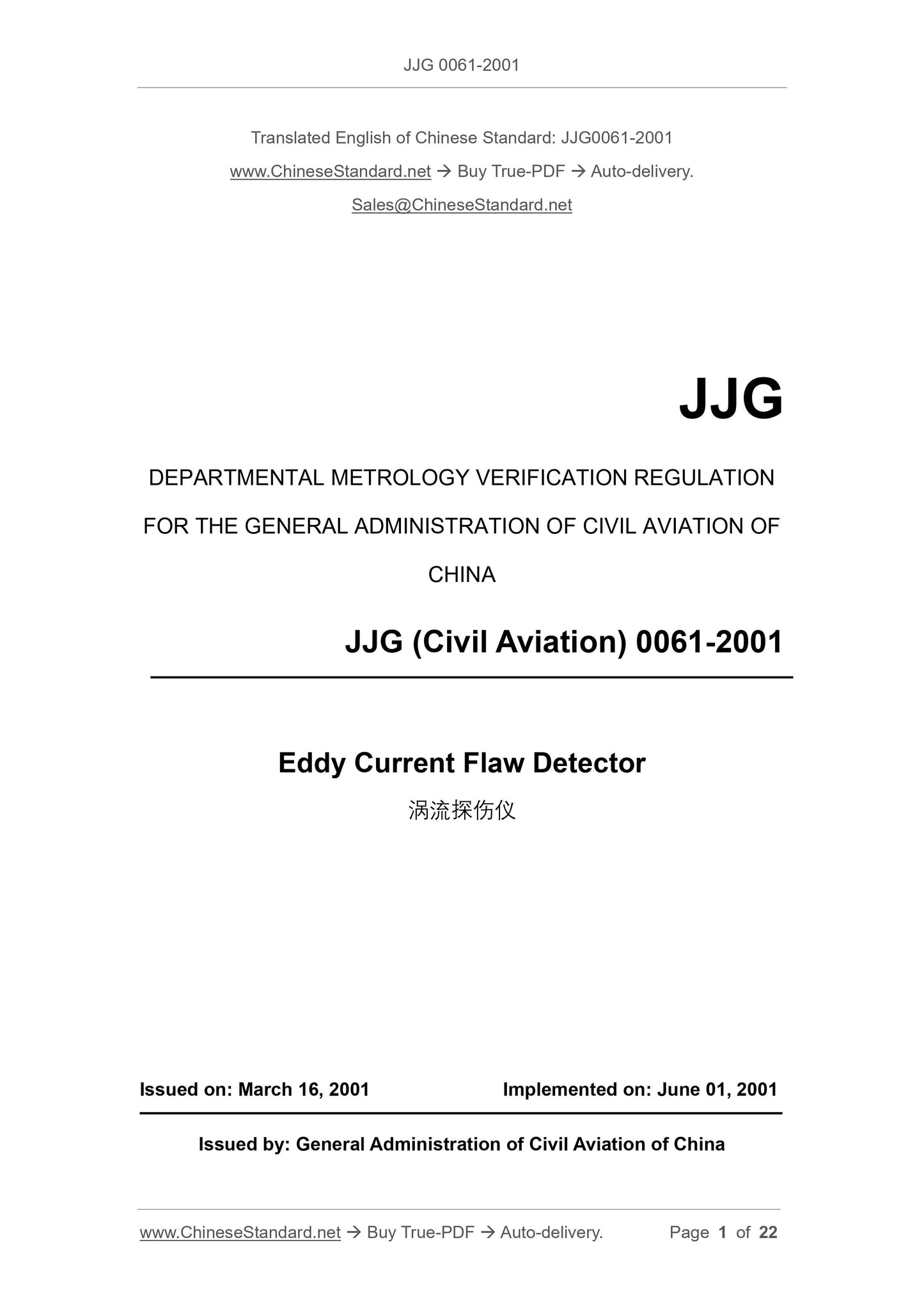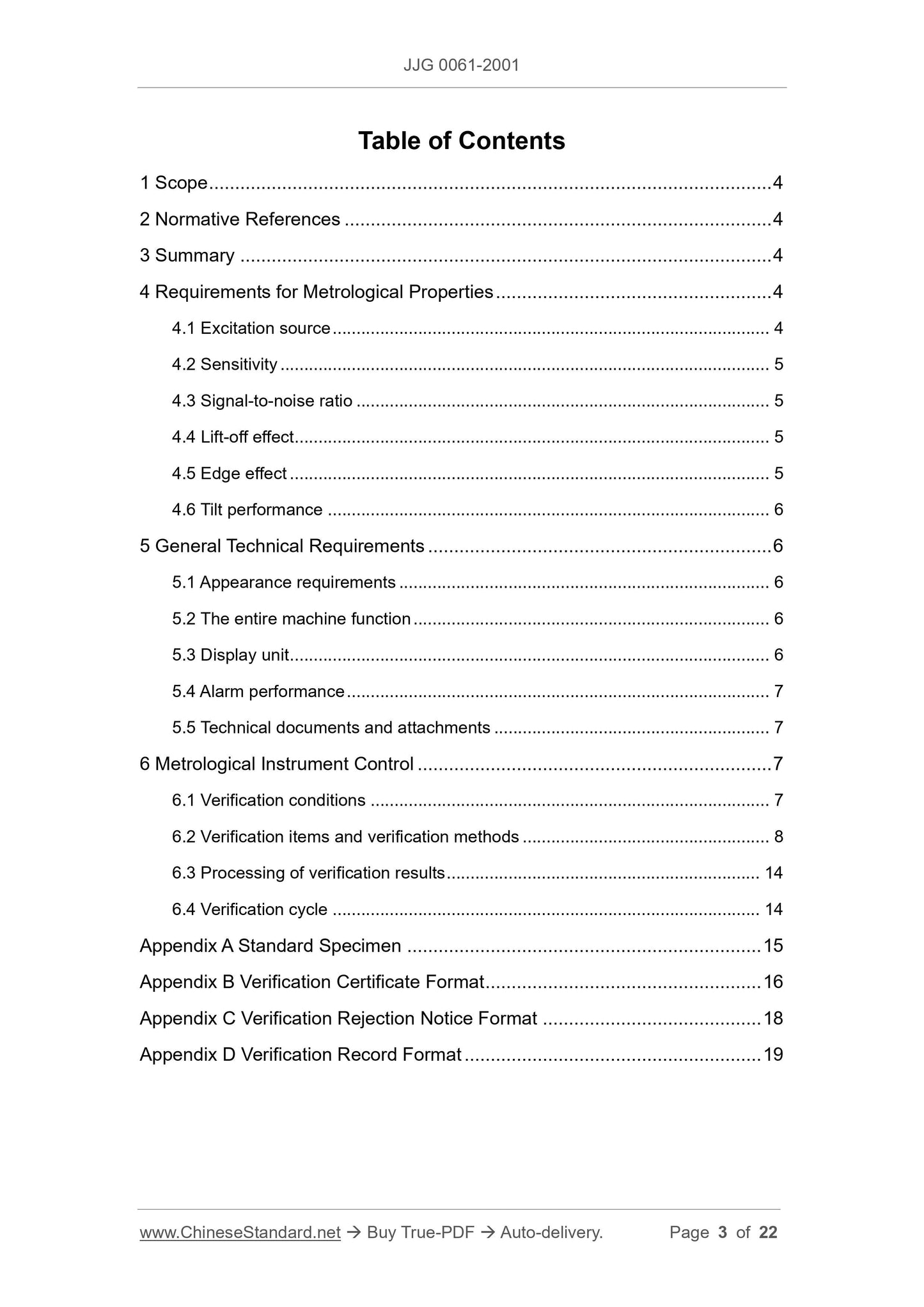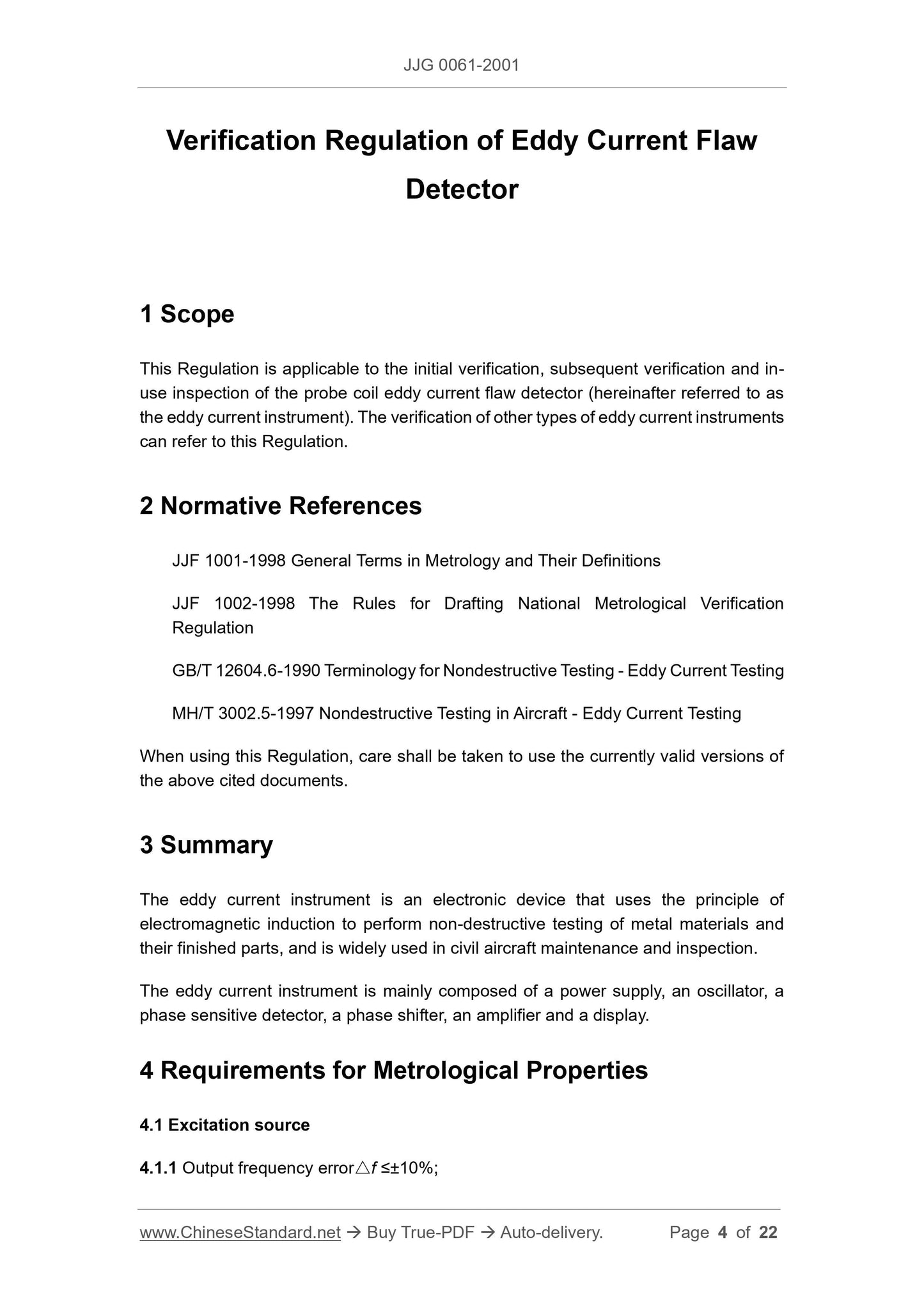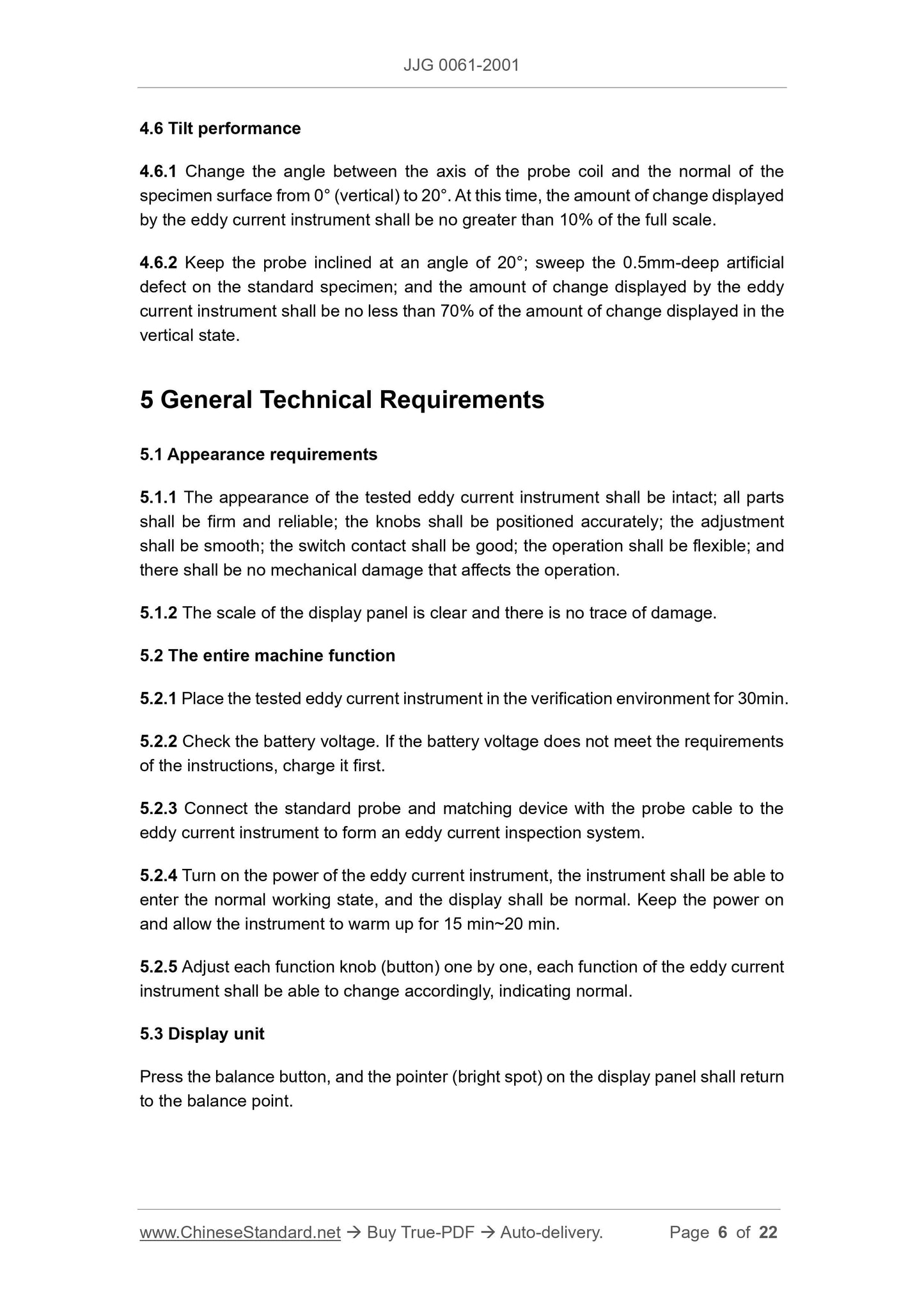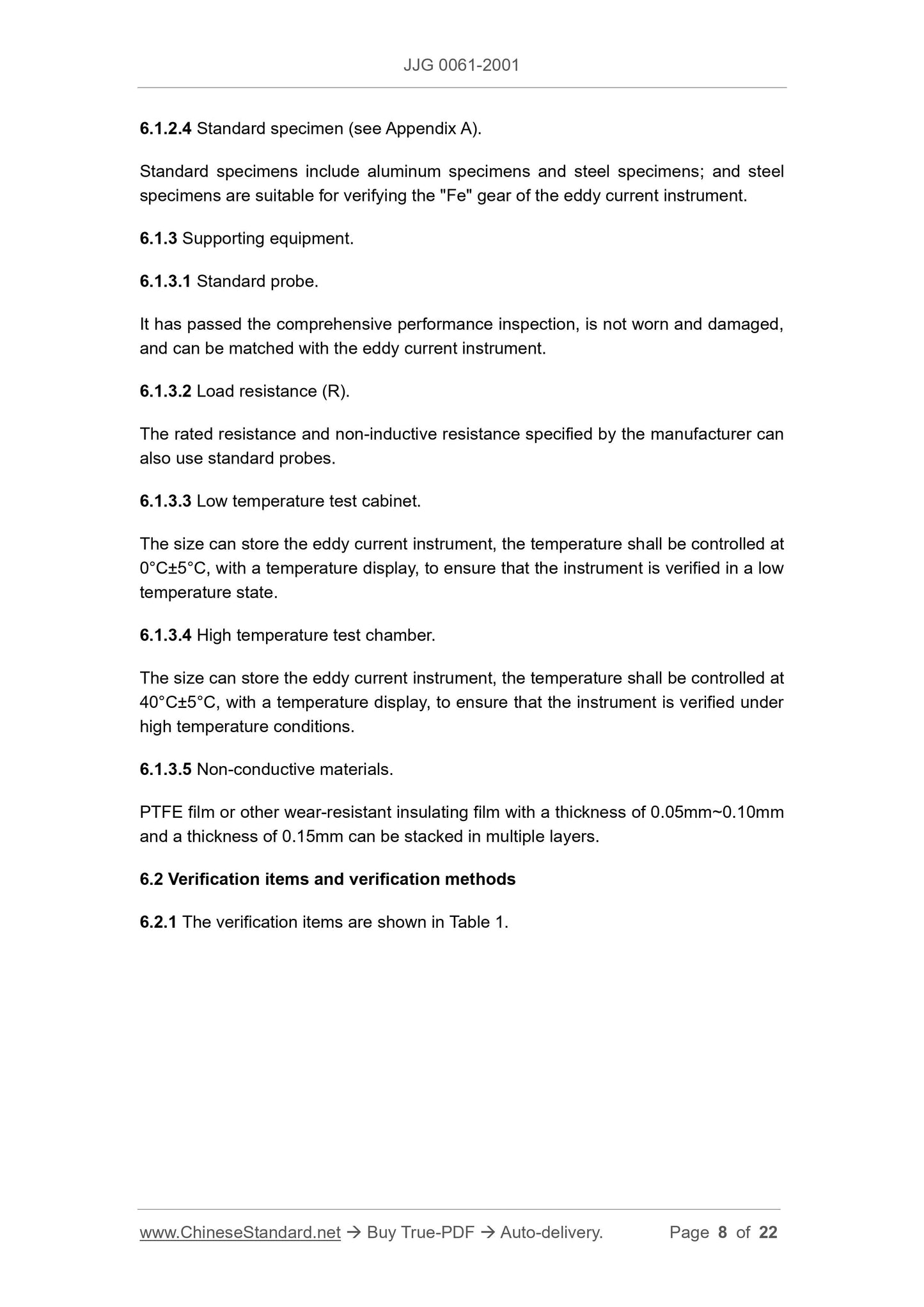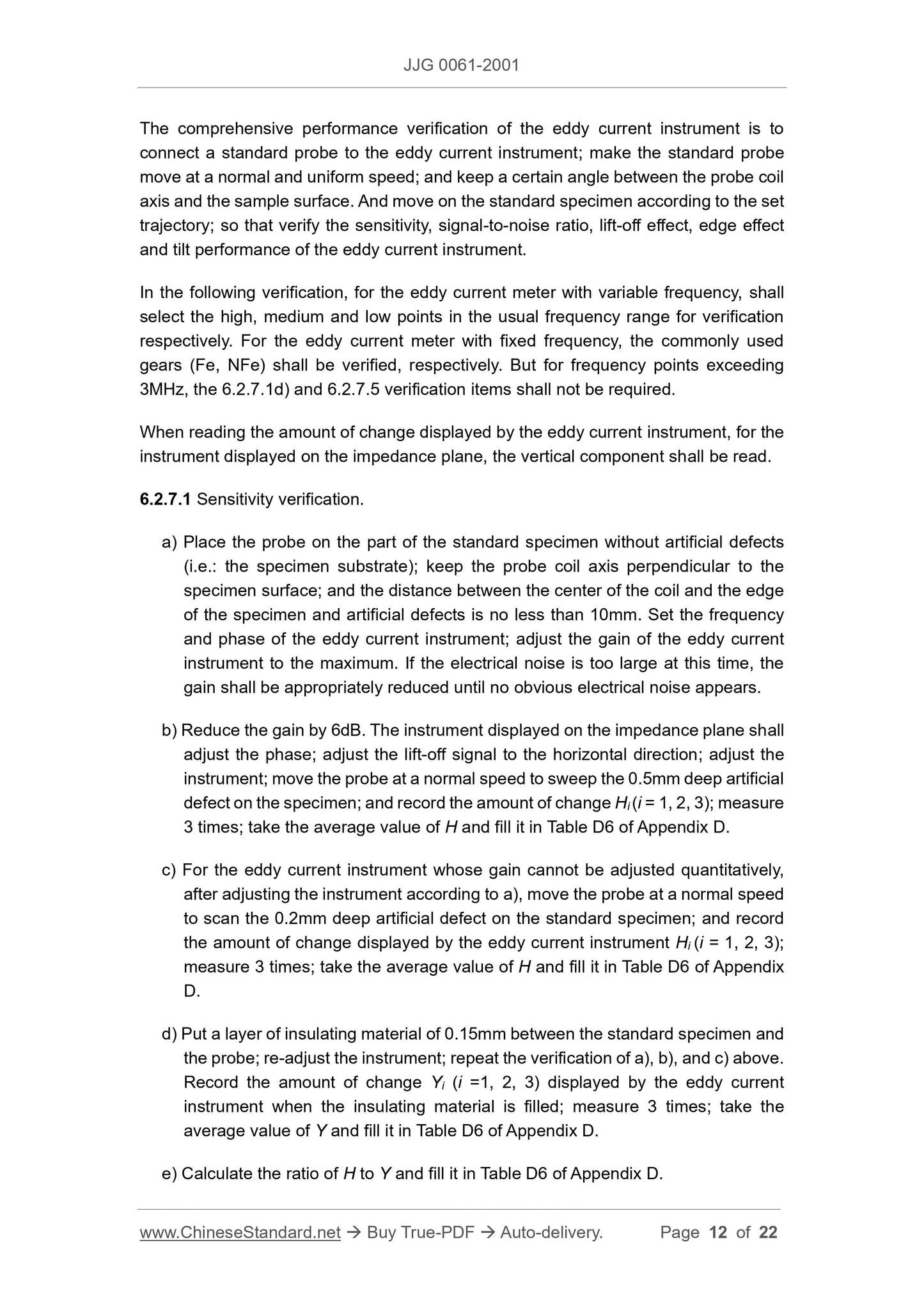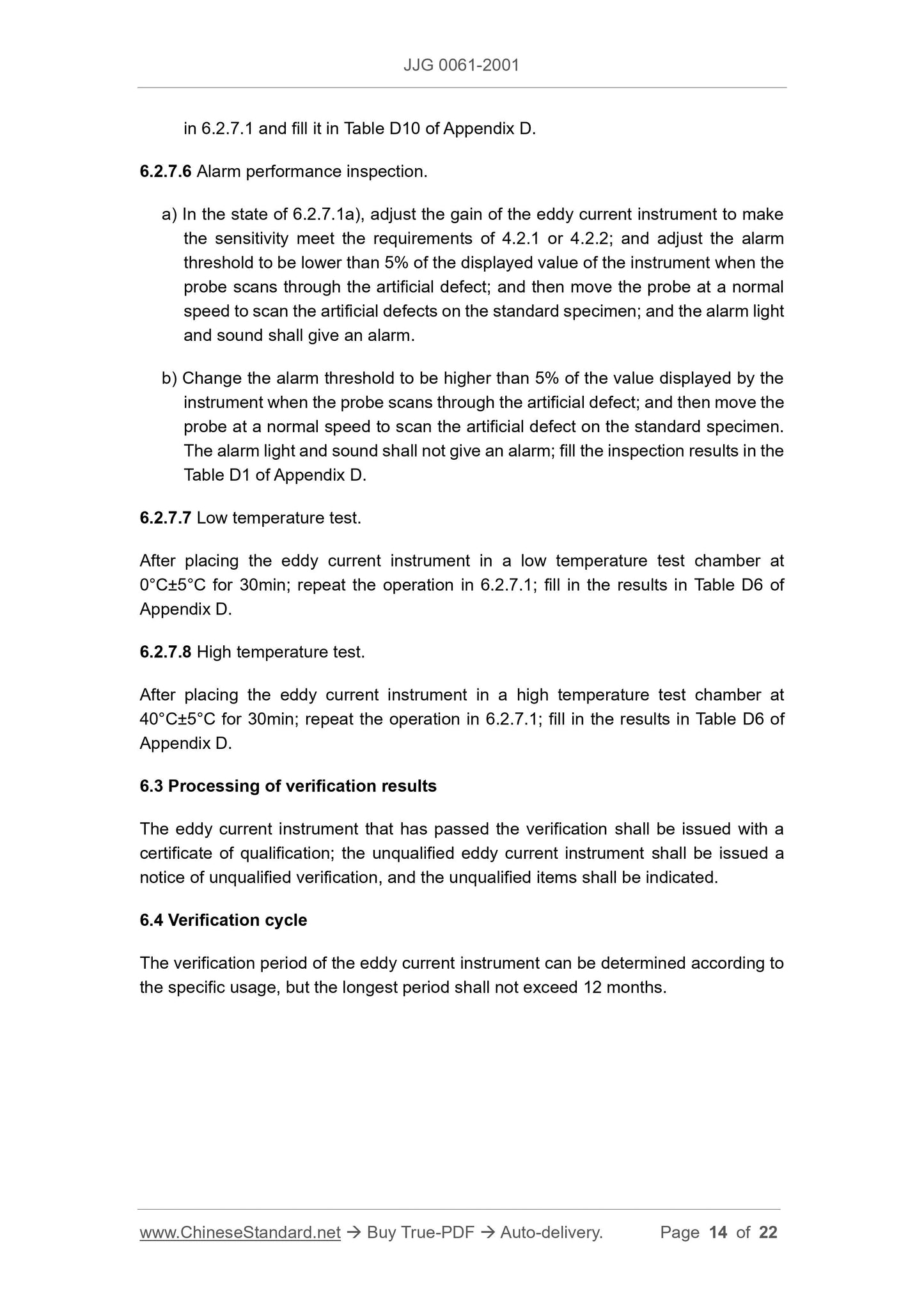1
/
of
7
www.ChineseStandard.us -- Field Test Asia Pte. Ltd.
JJG 0061-2001 English PDF
JJG 0061-2001 English PDF
Regular price
$370.00
Regular price
Sale price
$370.00
Unit price
/
per
Shipping calculated at checkout.
Couldn't load pickup availability
JJG 0061-2001: [JJG(MH) 0061-2001] Verification Regulation of Eddy Current Flaw Detector
Delivery: 9 seconds. Download (and Email) true-PDF + Invoice.Get Quotation: Click JJG 0061-2001 (Self-service in 1-minute)
Newer / historical versions: JJG 0061-2001
Preview True-PDF
Scope
This Regulation is applicable to the initial verification, subsequent verification and in-use inspection of the probe coil eddy current flaw detector (hereinafter referred to as
the eddy current instrument). The verification of other types of eddy current instruments
can refer to this Regulation.
Basic Data
| Standard ID | JJG 0061-2001 (JJG0061-2001) |
| Description (Translated English) | Verification Regulation of Eddy Current Flaw Detector |
| Sector / Industry | Metrology and Measurement Industry Standard |
Share
